
Graptopetalum amethystinum. Planting succulents, Succulents indoor
The name Graptopetalum comes from the Greek word "graphos" and the Latin "petalum" which are a direct reference to the specks or markings visible on the plant's flowers, while "amethystinum" refers to the hues of the leaves.

Graptopetalum Amethystinum Potted Succulents, Succulent Plants, Outdoor
The graptopetalum amethystinum is a perennial that blooms red flowers that have a gray-green band and red spots. The outer surface is also grey-green. The graptopetalum pachyphyllum is an especially unique variety of succulents. This variety has small and thick rosettes. The leaves are juicy and blue in color.
Graptopetalum amethystinum keeps looking better with every new day
Graptopetalum amethystinum is a beautiful slow-growing succulent with erect to decumbent or pendant, sometimes basally branched stems, each bearing a rosette of thick fleshy rounded leaves at its end. The stems grow up to 1 foot (30 cm) long. Rosettes are up to 6 inches (15 cm) in diameter.
Graptopetalum Amethystinum r/succulents
This succulent type is a unique one that blooms in the spring. When it blooms, you will enjoy white to yellow flowers. It is a nice addition to your collection of plants especially if you have it displayed in a beautiful pot. This page contains affiliate links. Quick Facts: Prefers full sun Can be grown outdoor
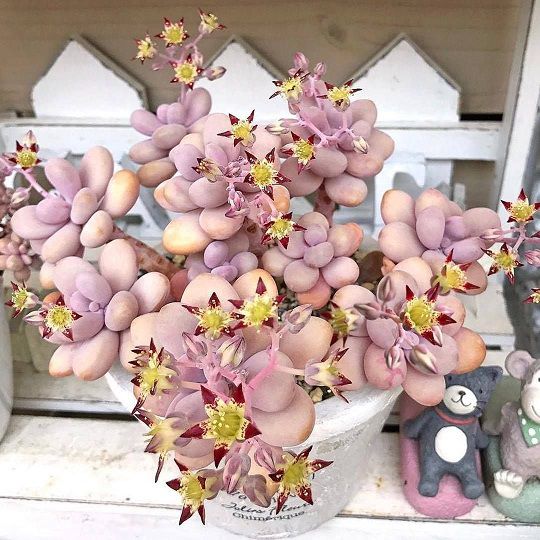
Sementes de Graptopetalum amethystinum (Suculenta) 10 sementes
Temperature: Zone 9a from 20° F to 25° F (-6.7 ° C to -3.9° C) to Zone 11b from 45° F to 50° F (7.2° C to 10° C) Winter Survival: Not cold hardy Propagation: leaves, offsets, seeds Flower: in the Spring or Summer Flower Type: Yellow-Orange Toxic: Generally non-toxic to humans and animals Dormant: summer Space Requirement: Indoors & Outdoors

Graptopetalum Amethystinum 3cm Succulent Live Plants garden Lovely
Graptopetalum Amethystinum is an unusual flower and succulent plant species that look like moon rocks with a powdery coating. Graptopetalum amethystinum - Lavender Pebbles belongs to the genus Graptopetalum in the Crassulaceae family, and it is native to west-central Mexico and the United States. It is related to Echeveria. PinGraptopetalum amethystinum with lovely shades of […]

Graptopetalum amethystinum Comprar en Succumom
Graptopetalum amethystinum - Lavender Pebbles belongs to the genus Graptopetalum in the Crassulaceae family, and it is native to west-central Mexico and the United States. It is related to Echeveria. Graptopetalum amethystinum with lovely shades of lavender pink and green leaves with a powdery coating.

Graptopetalum Amethystinum Pinkstone Succulent Plant Shown in 2" Pot
Amazon Also known as Graptopetalum superbum, this flattened rosette is very attractive alone or in an arrangement. The spoon-shaped leaves have a slight keel to them, but what makes this species so well-known is the pastel lavender leaves. They self-propagate through pups that form along the stem and continue to grow to form a succulent shrub. 3.
Graptopetalum amethystinum cristata ? r/succulents
The Graptopetalum Amethystinum succulent, also known as Lavender Pebbles, is a species native to the deserts of Mexico, mainly in the states of Durango, Sinaloa, Jalisco, and Zacatecas. Its stunning beauty and rarity make it highly sought after by succulent enthusiasts and collectors alike.

GRAPTOPETALUM AMETHYSTINUM. Cacti and succulents, Planting succulents
The rules for Graptopetalum care are similar to those for most succulents. Container-bound plants thrive in a mixture of peat, sand, or other grit, topsoil, and a little bit of compost. Full sun is the best situation, but they will also grow in partial sun with slightly rangy results. Graptopetalum s need excellent drainage and moderate water.

graptopetalum amethystinum Plantas suculentas, Suculentas, Jardim de
Graptopetalum amethystinum 'Lavender Pebbles' and Pachyphytum oviferum 'Moonstones' are two different species of succulent plants that belong to the same family, Crassulaceae. While they may look similar, there are several differences between the two, including: Flower color and shape: This is the main way you can instantly tell them apart.

Imported Rare succulent Graptopetalum amethystinum Etsy
The Graptopetalum amethystinum is a succulent plant that can tolerate full sun to partial shade. Full sun exposure will give the best results in terms of growth and flowering. However, the Graptopetalum amethystinum will also grow well in partial sun if given a place to hide from the scorching summer heat.

GRAPTOPETALUM AMETHYSTINUM Daniels Specialty Nursery Succulent seeds
Graptopetalum amethystinum (Lavender Pebbles) is a beautiful slow-growing succulent with erect to decumbent or pendant, sometimes basally…. View Plant Details. Graptopetalum amethystinum with a plant profile, including common names, scientific classification, brief description, origin, care tips, and photos.
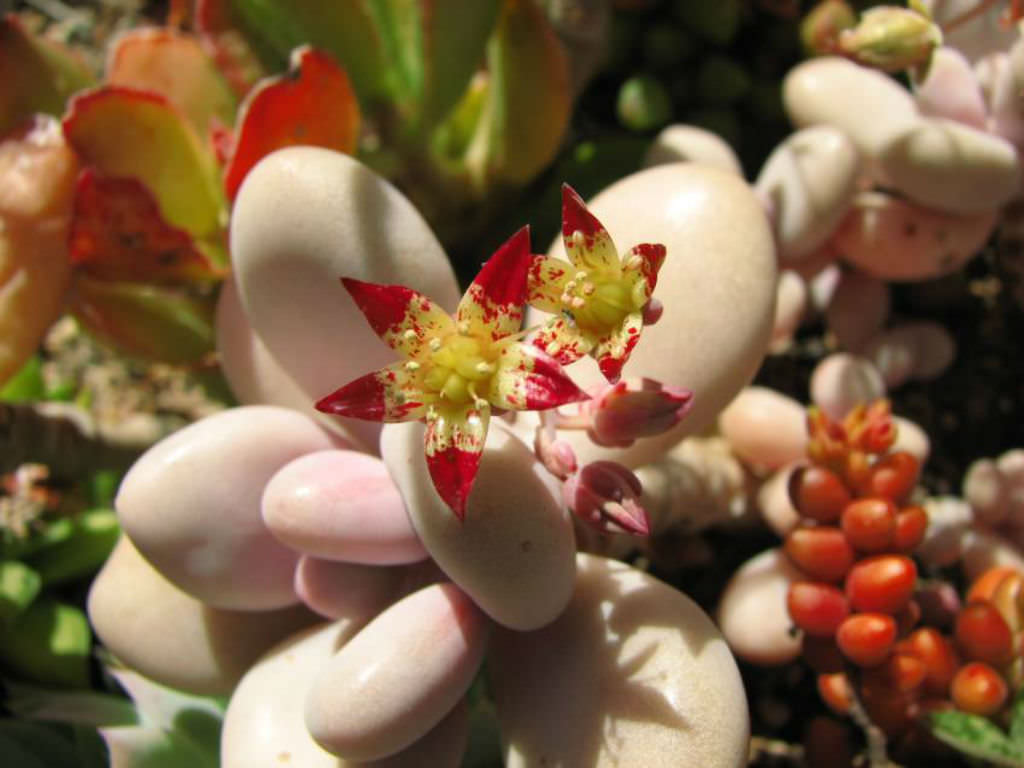
Graptopetalum amethystinum World of Succulents
Graptopetalum Amethystinum is an unusual flower and succulent plant species that look like moon rocks with a powdery coating. Graptopetalum amethystinum - Lavender Pebbles belongs to the genus Graptopetalum in the Crassulaceae family, and it is native to west-central Mexico and the United States. It is related to Echeveria.

Graptopetalum amethystinum Suculentia, venta online de suculentas y
The genus name Graptopetalum means "inscribed petal" and refers to the red markings found on the petals of most species. Flowers in Echeveria are urn-shaped or tubular, with the mouth of the flower facing outward or downward, but in Graptopetalum the petals spread widely and face upward, like little 5-pointed stars.
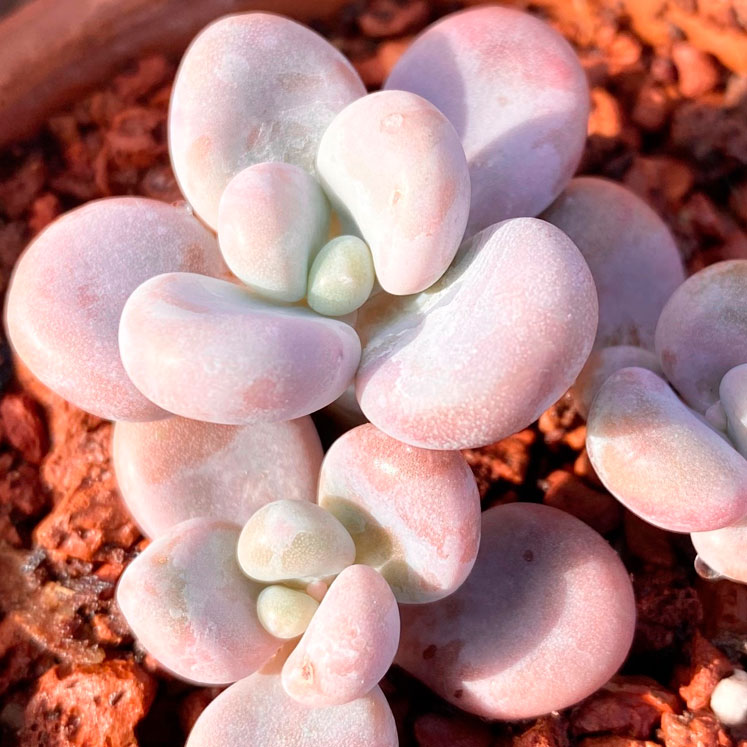
Graptopetalum Amethystinum Suculentas
Contents 1 Types of Graptopetalum 2 Graptopetalum Species and Varieties 2.1 Graptopetalum amethystinum 2.2 Graptopetalum bartramii 2.3 Graptopetalum bellum 2.4 Graptopetalum filiferum 2.5 Graptopetalum fruticosum 2.6 Graptopetalum macdougallii 2.7 Graptopetalum mendozae 2.8 Graptopetalum 'Mirinae' 2.9 Graptopetalum pachyphyllum